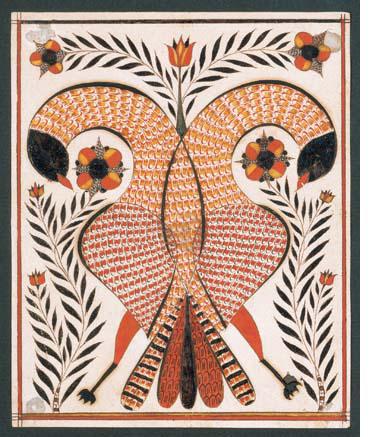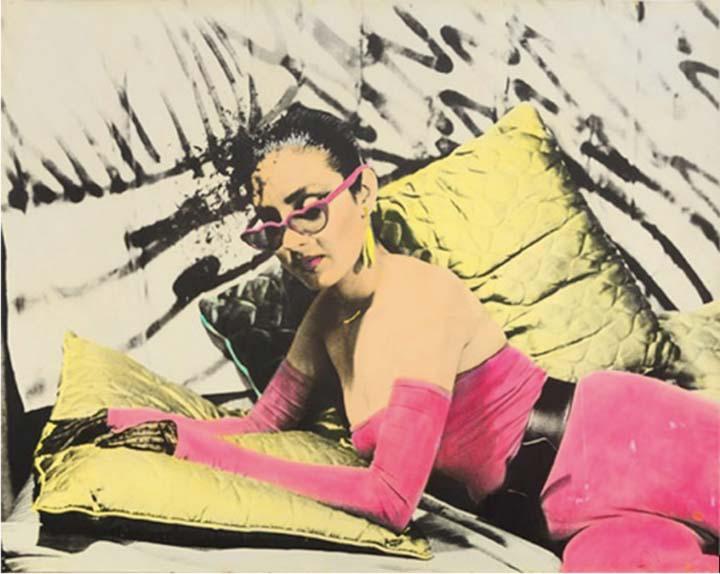The DART Board: 06.29.2022
Opening June 30: Art and Race Matters | The Career of Robert Colescott at The New Museum
The bold and richly rendered works of Robert Colescott (1925–2009) plumb art history to discover issues of race, beauty, and American culture that are rife for satire. Often ahead of his time, Colescott explored the ways in which personal and cultural identities are constructed and enacted through the language of Western art.
Colescott is perhaps best known for works made during the 1970s in which he reimagined iconic artworks to examine the absence of Black men and women as protagonists in dominant cultural and social narratives. Works like George Washington Carver Crossing the Delaware: Page from an American History Textbook (1975, above) offer irreverent parodies of familiar masterpieces, while incisively critiquing America’s often brutally discriminatory past and present.
In its complex interplay of high art and vernacular traditions, his work has opened new possibilities for chronicling the history of America while ridiculing its grandiosity and biases. This groundbreaking exhibition highlights Colescott’s legacy as a standard bearer for figuration in the 1970s, a forerunner of the appropriation strategies of the 1980s, an overlooked contributor to debates around identity politics in the 1990s, and a pioneer in addressing some of the most challenging issues in global culture today.
Through October 9 at The New Museum, 235 Bowery, New York, NY Info

Now open: The Cheech Marin Center for Chicano Art at Riverside Art Museum
This museum has been in discussion for more than two decades, by my count, so Saturday was a red-letter day for the history of art in Southern California. On June 18, the Riverside Art Museum opened its Cheech Marin Center for Chicano Art and Culture in a handsomely renovated, 61,000-square-foot former library building in the city center, writes Christopher Knight in the LA Times. No other museum presents a substantive permanent exhibition focused on any critically important facet of the region’s bountiful postwar art history, which is the basis on which Los Angeles has become a global cultural capital over the last generation. Above: The inaugural permanent collection installation at the Cheech features nearly 100 paintings and drawings. Photo ©Christopher Knight / Los Angeles Times
The Cheech, as the Riverside facility has inevitably been nicknamed, given its celebrity origin in the art collection assembled over 30 years and donated by comedian-actor Cheech Marin, is a first. Chicano art is offered in concentration — serious, playful and in a sprawling range of visual vocabularies, some more successful than others, all worth taking in. Read the entire feature here
The Cheech Marin Center for Chicano Art at Riverside Art Museum, 3581 Mission Inn Ave., Riverside, CA Info
L.A. Memo: Chicana/o Art From 1972-1989
Highlighting the artistic contribution that Los Angeles-based Chicana/o artists made to American art, this exhibition, consisting of 51 artworks by 31 artists, investigates how Chicana/o artists in the wake of the Chicano Moratorium adapted new modes of image-making and self-expression borrowed from the expanding media culture of the 1960s to create a pivotal genre of art that broke barriers to tell their stories through various media. Above: Patssi Valdez, “Pillow Talk” (1979–80),
During the Chicano Movement and the Moratorium, writes Matt Stromberg in Hyperallergic, printmaking emerged as a democratic medium that could inexpensively and quickly disseminate ideas and images. Several prominent artists are represented here through prints, including Gronk, Herrón, Barbara Carrasco, and John Valadez. Many of these were printed by Self-Help Graphics, an influential community-based printmaking studio founded in 1973, which has played in producing and promoting Chicana/o art.
Through August 14 at LA Plaza de Cultura y Artes, 501 North Main Street, Los Angeles, CA Info
Continuing through August 20: everything slackens in a wreck at Ford Foundation Gallery
“Everything slackens in a wreck,” wrote poet Khal Torabully about the migration of Asians to the Americas in the nineteenth century. Between 1838 and 1917, over half a million indentured workers were taken to plantations in Guadeloupe, Guyana, Jamaica, Trinidad and Tobago, and elsewhere, intended as replacement labor following the abolition of slavery. Blows were struck to the Hindu caste system, patriarchy, and other systems of power, new forms of culture and knowledge emerged, and, more often than not, better material living conditions for subsequent generations resulted. Above: Kelly Sinnapah Mary, Notebook of No Return: Memories, 2022, Acrylic on canvas
The artworks that comprise everything slackens in a wreck demonstrate both this long, continuing history of survival and the particular contours of the artists’ lives and their necessary choices within the various spaces they inhabit in the Americas. Margaret Chen (Jamaica/Canada), Andrea Chung (USA), Wendy Nanan (Trinidad and Tobago) and Kelly Sinnapah Mary (Guadeloupe) share a lineage in indentureship, and each contends with the complex legacy of this heritage over a century after their ancestors boarded ships headed from Asia to the Americas. They criticize the enduring, destructive impact of processes of colonization, but in their practices they also recognize migrants’ determined survivability, finding and activating productive opportunities in the midst of crisis.
Ford Foundation Gallery (320 East 43rd Street, New York, NY Info

Bringing together more than 200 objects produced over the past five centuries, The Clamor of Ornament: Exchange, Power, and Joy from the Fifteenth Century to the Present explores ornament in architecture, art, and design through the lens of drawing. The exhibition foregrounds ornament’s potential as a mode of communication, a form of currency, and a means of exchange across geographies and cultures. Above: David Kulp, Presentation Fraktur of a Double Eagle” (c. 1815), courtesy American Folk Art Museum/Art Resource, NY and the Drawing Center
The exhibition features a broad range of drawings, prints, textiles and objects, from eighteenth-century Indian palampores; kosode paper designs; Navajo textiles; Albrecht Dürer’s Islamic-inspired woodblock-print knots to original architectural drawings by Louis Sullivan and Sir David Adjaye; contemporary ornament in the form of logos from luxury fashion brands; and even present-day designs for patisserie.
The Drawing Center, 35 Wooster Street, Soho, New York, NY Info
Continuing through January 16, 2023: Life Between Buildings at MoMA PS1
MoMA PS1’s ad hoc landscape design exhibition details how artists and collectives have historically used New York City’s public spaces to build community organizations. Beginning in the 1970s, at a moment when New York City faced a severe fiscal crisis, grassroots groups across New York City began converting lots into community gardens. This coincided with artists’ efforts to think beyond the confines of the studio, gallery, and museum as sites for their work. At certain moments, these histories intertwined: artists made work in conversation with, and sometimes directly joining, community efforts to rethink the cityscape, recovering space towards creative, communal, and ecological ends. By repurposing liminal and overlooked sites, these groups and artists ask us to rethink how life—human and non-human—can grow in a city where space has become increasingly scarce and nature progressively imperiled. Above: Photograph of Bowery Houston Community Farm and Garden, c. 1965 (currently known as Liz Christy Community Garden)
Works from the 1970s to today detail efforts to occupy what dwindling spaces remain in the real estate capital of the world, from gardens and greenhouses to sidewalks and empty lots.
MoMA PS1, 22-25 Jackson Avenue, Queens, New York Info






